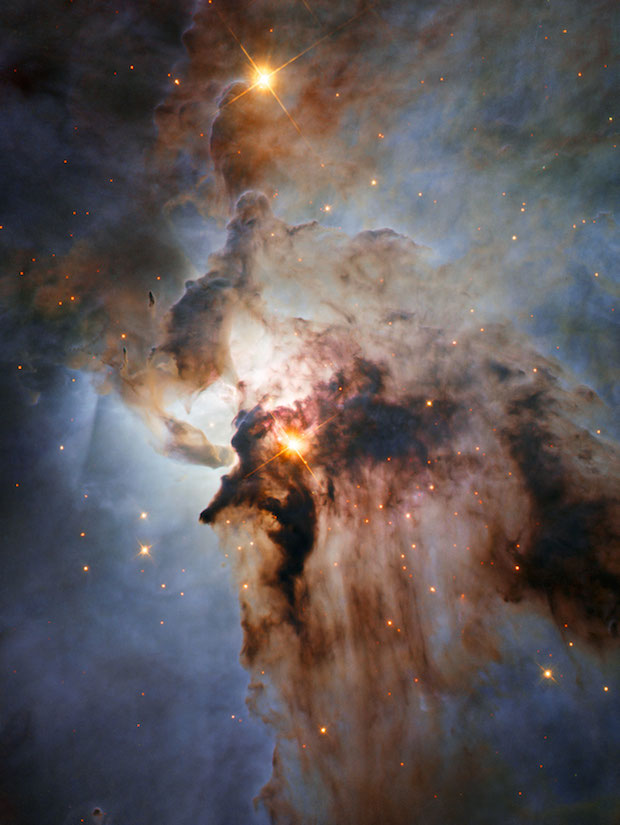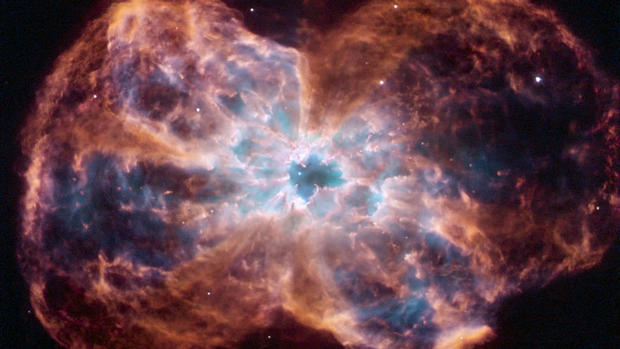Dramatic Hubble image reveals a churning interstellar "lagoon"
Looking like smoke plumes from a forest fire, this image NASA's Hubble Space Telescope shows the hot, glowing clouds of gas from the Lagoon Nebula.
The nebula, located in the constellation of Sagittarius, or the archer, may seem like a tranquil place deep in space. But it's anything but quiet.
As this new Hubble image demonstrates, there is plenty going in the nebula also known as Messier 8. The region is filled with intense winds from hot stars, churning funnels of gas, and energetic star formation, all embedded within an intricate haze of gas and pitch-dark dust.
The central part of the Lagoon Nebula contains two main structures of gas and dust connected by wispy twisters, visible in the middle third of this image. These features are quite similar to tornadoes on Earth - they are thought to be wrapped up into their funnel-like shapes by temperature differences between the hot surface and cold interior of the clouds.
The nebula is also actively forming new stars, and energetic winds from these newborns may contribute to creating the twisters.
The bright star embedded in dark clouds at the centre of this image is known as Herschel 36. This star has sculpted the surrounding cloud, stripping away material and influencing its shape. Herschel 36 is the main source of ionizing radiation for this part of the Lagoon Nebula.
Nebulae are often named based on their key features, with the most beautiful including the Ring Nebula (heic1310), the Horsehead Nebula (heic1307) and the Butterfly Nebula (heic0910).
The inspiration for this nebula's name may not be immediately obvious because this image captures only the very heart of the nebula. The Lagoon Nebula's name becomes much clearer in a wider field view, when the broad, lagoon-shaped dust lane that crosses the glowing gas of the nebula comes into view.

